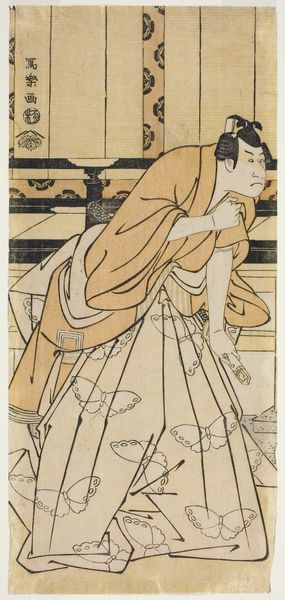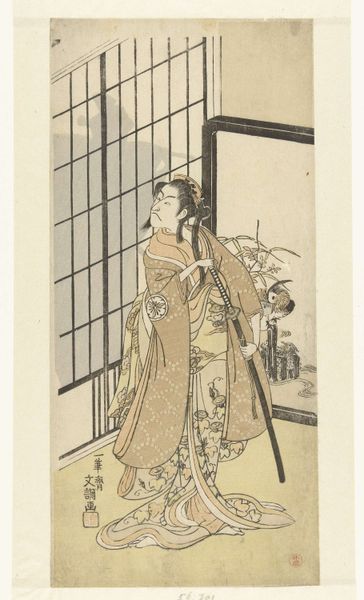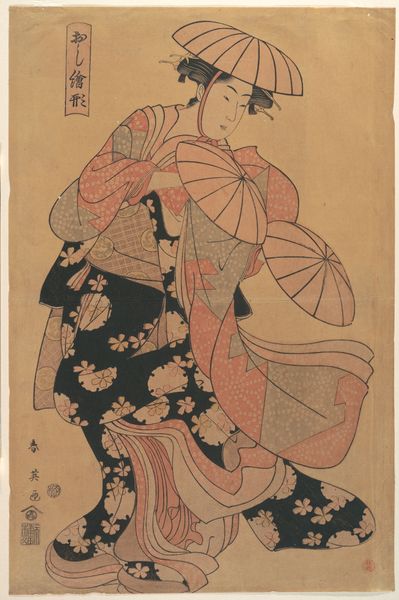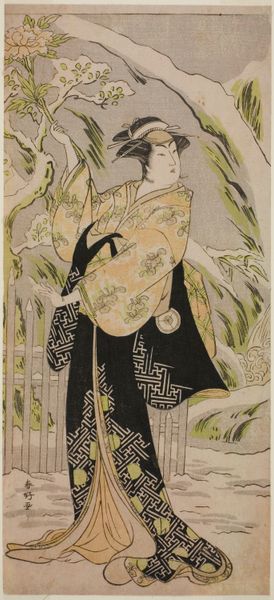
Young Woman Climbing a Ladder 1758 - 1778
0:00
0:00
print, woodcut
#
water colours
#
ink painting
# print
#
asian-art
#
landscape
#
ukiyo-e
#
japan
#
figuration
#
woodcut
Dimensions: 25 1/8 x 4 15/32 in. (63.8 x 11.4 cm)
Copyright: Public Domain
Editor: Here we have Suzuki Harunobu’s "Young Woman Climbing a Ladder," a woodcut print likely made sometime between 1758 and 1778. It has a quiet, almost hushed quality. I am immediately drawn to the linear quality of the ladder against the organic shape of the foliage above. How would you interpret the composition? Curator: Observe how Harunobu divides the picture plane. The assertive diagonal of the ladder sharply bisects the composition. How does this sharp line interact with the more muted and curvilinear rendering of the woman and the foliage above? Editor: It does create a tension, doesn’t it? The sharp, almost severe geometry of the ladder is juxtaposed with the softer forms. The ladder and the figure draw your eye up towards the leaves above, as if it’s staged this way. Curator: Precisely. And note the tonal variations—how subtle shifts in color define the volumes of the woman’s kimono and the leaves. Harunobu orchestrates a complex interplay of line and color to create a dynamic and sophisticated composition. Can you detect a geometric grid or an underlying armature supporting the work? Editor: Not at first glance, although now that you mention it, the placement of the ladder and even the angle of the woman’s body seem deliberately calibrated against an unseen framework. So, the sense of quietude might actually stem from this structured organization? Curator: It suggests a kind of underlying order. Harunobu guides our perception through compositional structures. The work achieves its beauty from balancing shape and depth through both color and compositional architecture. Editor: Thank you, I have a much better understanding now! Curator: And I trust I better understand how people see!
Comments
No comments
Be the first to comment and join the conversation on the ultimate creative platform.













